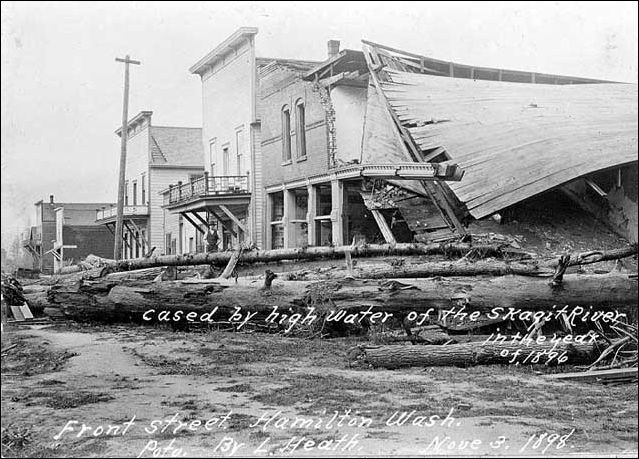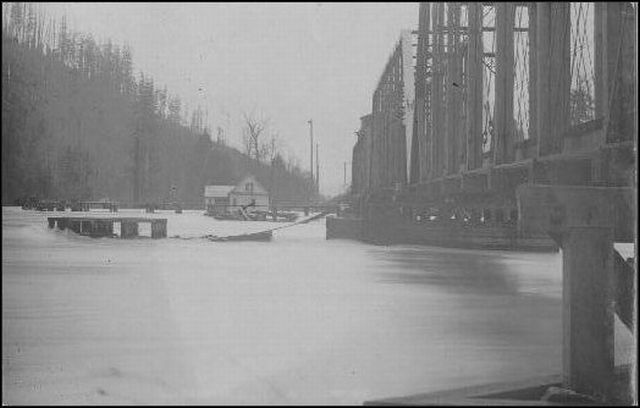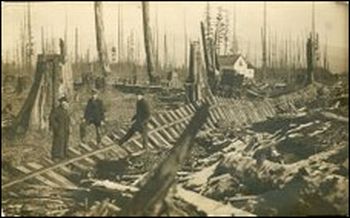The scene above was repeated many times and places all over the county in 1909. This photo has been published before but until we studied photos in the University of Washington system and found this one, we could not determine the date or details of the flood. The scene is on Water street in Hamilton, which is now, in 2009, at the very edge of the north shore of the Skagit river or possibly underwater. If you go to that location today at the foot of Cumberland street, south of present-day Hamilton, you will find gravel and potholes and a great view across the river of second-growth forest where the South Hamilton School once stood. The flood of 1896 surely inflicted damage like this and the 1897 was even more destructive to Hamilton and the upriver town of Sauk City, which was literally swept into the river.
The photographer was looking almost due west. Note two interesting items in the photo. One is the building at the center, the third fašade toward the rear. That resembles the Yellowstone Bar and Hotel, owned by Peter Jacobino, where Marshal Jake Woodring would be murdered on the sidewalk five years later. The other landmark is the pole at the left center, which was for either telegraph or electric power lines. We hope that a reader can determine its purpose. It surely was not for a telephone line because that service would not come until 1909 when druggist James Smith and the Quackenbush sisters brought telephone service to Hamilton. We also hope that a reader can tell us who took the photo.
One might ask why the damaged buildings still stood two years later. We surmise the reason to be that Hamilton was suffering from the collapse of a boom and the hopes for mines on Coal Mountain and Iron Mountain on the south shore of the river. The country went through a crushing Depression in 1893-96 that was especially hard on frontier boomtowns such as Hamilton, which just seven years before was touted in newspapers as far away as New York City as the "Pittsburgh of the West." Maybe Jacobino and the other property owners left the shattered hulk of the flood-damaged buildings just as they were when the flood swept through on Nov. 16, 1896. As always, we are grateful to Larry Kunzler and his book, Skagit River Valley, the Disaster Waiting to Happen. We hope that readers may have in their family collections a newspaper article that will reveal more about Water Street and that 1896 flood.
|

 810 Central Ave.,
810 Central Ave., 


